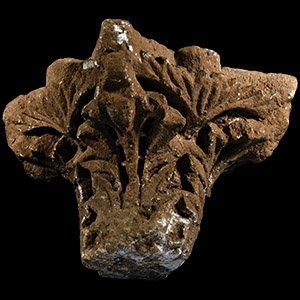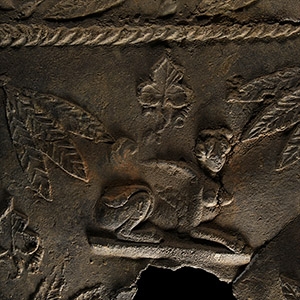Home > Auctions > 5 - 9 March 2024: Ancient Art, Antiquities,
Natural History & Coins
Auction Highlights:
Private collection 1990s.
Ex London, UK, gallery.
Cf. Ersöz, S.B., ‘The hand gesture and symbols of Sabazios’ in Opuscula, Annual of the Swedish Institutes at Athens and Rome, 11, 2018, figs.1, 4, 7, 11, 12.
The votive character of the hand could link it to the God Sabazios, often associated with a number of archaeological finds depicting a bronze, right hand in the benedictio latina gesture. The hand appears to have had ritual significance and may have been affixed to a sceptre (as the one carried by Sabazios on a slab, one from Philippopolis, nowadays Plovdiv in Bulgaria). The association with Sabazios is sometimes suggested in similar hands, by the presence of a snake embossed around the circumference of the hand, because the iconic image of the god or hero on horseback battling the chthonic serpent, appears on Celtic-Roman votive columns, and with the coming of Christianity it was easily adapted to the representations of Saint George fighting the Dragon.
Ex Cummings collection, UK, 1990s.
See for a similar colossal thumb sculpture the left hand of Constantine the Great in Parisi Presicce, C., ‘L’abbandono della moderazione: I ritratti di Costantino e della sua progenie’ in Donati, A., Gentili, G., Costantino Il Grande, la civilta' Antica al bivio fra Occidente ed Oriente, Milano, 2005, pp.138-155, pp.144,153.
Ex Frits Philips, Eindhoven, Netherlands, before 1980.
European private collection, 1980s.
This lot has been checked against the Interpol Database of stolen works of art and is accompanied by search certificate no.12056-213654.
Cf. Christie's, 6 December 2007, no.178.
Previously acquired from a USA collection, 1980s.
Ex private German collection.
This lot has been checked against the Interpol Database of stolen works of art and is accompanied by search certificate no.12082-213586.
From the collection of Jan Onderdijk, Belgium, before 1980.
Acquired by Mr J.R. an antiquarian in the late 1980s.
Accompanied by an academic report by Dr Raffaele D’Amato.
This lot has been checked against the Interpol Database of stolen works of art and is accompanied by search certificate number no.12022-213655.
See Reinach, S., Répertoire de la statuaire Grecque et Romaine, Paris, 1897, p.69, item 1, for Pan in similar pose, and 58, no.5, for images of a satyr in similar position; Arbeid, B. ‘Gruppo di Pan e Dafni’ in Romualdi, A. (ed.), Studi e restauri. I Marmi antichi della Galleria degli Uffizi, II, Firenze, 2007, pp.154-161.
Statues of satyrs, relaxing, dancing, and pursuing nymphs proliferated during the third century B.C., as the cult of Dionysus, god of wine and the pleasures it bestows, grew in importance. The Romans appreciated portrayals of Satyrs and Silens, and borrowed them from Greek art, the god Pan being one of the favourite subjects. This statuette is probably a Roman copy from a Hellenistic original, similar to the specimen from the Garimberti collection, where the god, with the left leg firmly planted on the ground and the other leg raised, is carrying a basket of flowers and fruit on his back.
Ex private French collection, early 1960s.
Acquired by the current owner in 2011.
Accompanied by an academic report by Dr Marina Mattei and Dr Laura Maria Vigna.
Accompanied by a copy of a French cultural passport no.129940.
This lot has been checked against the Interpol Database of stolen works of art and is accompanied by search certificate no.12086-213624.
See McDowall K.A., The so-called 'sardanapalus', in Journal of Hellenic Studies, 1904; Gasparri C., in LIMC III, 1,1986, s.v.Dionysos, 414-421; La Rocca E. (ed.), Il sorriso di Dioniso, Roma 2010; La Rocca E., Hermes-Thoth e Dioniso redentore, Dall'Egitto dei Tolomei al tardo- antico. Studí sul mosaico della Casa di Aion a Neo Paphos, Bullettino della Commissione Archeologica Comunale di Roma, Supplementi, 28, 2021.
The head finds comparable parallels with a series of herms representing philosophers, lyricists and the god Hermes, deriving from Greek originals of the 5th century B.C. The reworking of these typologies in a cultured environment is due to the diffusion of sculptures linked to the idea of speculative otium and withdrawal into the bucolic world of which Dionysus was guardian and protector. The typology of the representation associates him with the concept of continuous rebirth and fertility of nature, typical of Dionysus Lenaeus.
Ex Phillips UK in 1998.
From a collection acquired on the UK art market from various auction houses and collections mostly before 2000.
From an important Cambridgeshire estate; thence by descent.
Cf. Durham, E., Metal Figurines in Roman Britain, vol. 2, Reading, 2010, pl.44, for type.
From a collection acquired on the UK art market from various auction houses and collections mostly before 2000.
From an important Cambridgeshire estate; thence by descent.
Cf. Durham, E., Metal Figurines in Roman Britain, vol. 2, Reading, 2010, pl.44.
By repute found near Hadrian's Wall, UK.
From a collection acquired on the UK art market, circa 1999.
From an important Cambridgeshire estate; thence by descent.
Cf. Frel, J., The J.Paul Getty Museum, Roman Portraits, Malibu, 1981, p.75, for similar; see also similar rendering of beard and moustache on a portrait of Emperor Hadrian, in Hermitage, cf.Vostchinina, A., Le Portrait Romain, Musee de l'Hermitage, Leningrad, 1974, pls.L-LI.
This head of bearded man, from a statue or bust probably representing a philosopher, is very similar to the representation of the Emperor Antoninus Pius, and though not imperial, can be dated to his age. The bust produces a convincing illustration of how faithful subjects tried to resemble their contemporary Caesars. Although damaged and blackened by some fire or bad weather conditions, the bust of man is distinguished by its perfect execution and good craftmanship.
From a collection acquired on the UK art market from various auction houses and collections mostly before 2000.
From an important Cambridgeshire estate; thence by descent.
Accompanied by an academic report by Dr Raffaele D’Amato.
This lot has been checked against the Interpol Database of stolen works of art and is accompanied by search certificate number no.12081-213373.
Cf. similar item in the collection of the Metropolitan Museum of Art, New York, under accession no.99.17; for various similar examples s. Mendel, G., Catalogue des sculptures grecques, romaines et byzantines, Constantinople, 1914, nos.1151 (381), 1164-1166 (300,1152,1139), 1282-1283 (2015-2016), vol.III, pp.493-494.
The bucranium was used as a prominent motif on the exterior of Graeco-Roman temples where it replaced the use of genuine severed heads from the sacrificial rites. Garlands were draped over the heads on feast-days and occasions of special religious observance. The flattened upper face suggests an architectural use, perhaps as a corbel.
Ex Paris collection.
French gallery, Paris, 1990-2000s.
Cf. for fragments of similar capitals Michalowski, K., Palmyre, Fouilles Polonaises 1959, Warszawa, 1960, pl.143, p.133.
The capital seems near the types used in the Roman East, in particular the Alexandrian capital of type I or II, or maybe belonging to a transitional style driving to the semplificate type of the so called blocked-out capitals (a particular type of architectural decoration characterised by a simplified form).
Acquired 1970s-early 1990s.
Property of a North American collector.
London collection, 2016.
See Payne, G., Roman Leaden Coffin discovered at Plumstead in Archaeologia Cantiana, Vol.17, 1887, fig.10, for the presence of lead sarcophagi in Roman Britain; for a similar specimen in the Metropolitan Museum of Art, accession no.31.116a-i; Penn Museum, coffin panel B10280, from Lebanon (Tyre).
This item belongs to types widespread in the Eastern Mediterranean. The panel is decorated with a columned structure, and within each section were symbols of the outer-world, like gorgons, sphinx and dolphins. The sphinx, having a human head and breasts, legs and paws of a lion, and wings of a bird, was generally associated with protecting imperial tombs and temples.
85 - 96 of 2726 LOTS

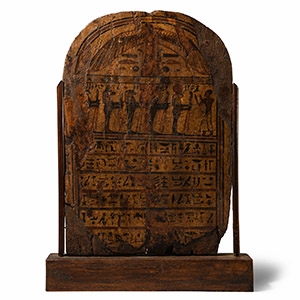
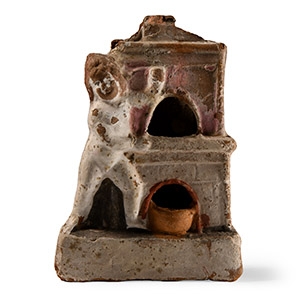

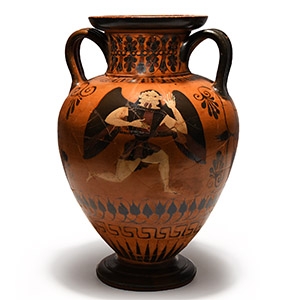
.jpg)
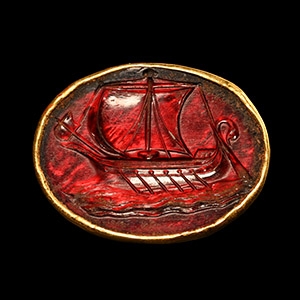
.jpg)

.jpg)
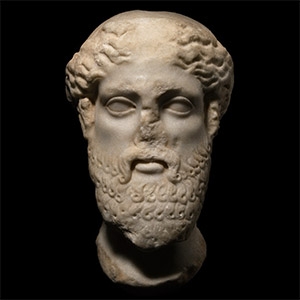
.jpg)
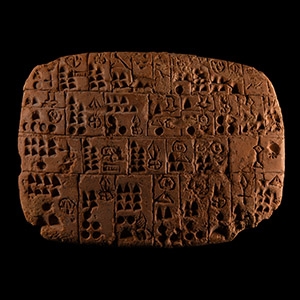

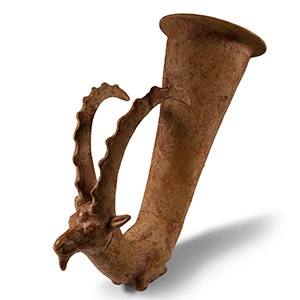
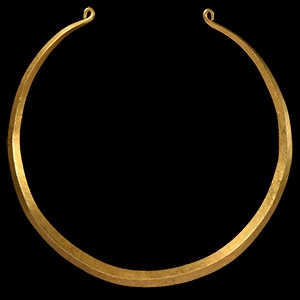
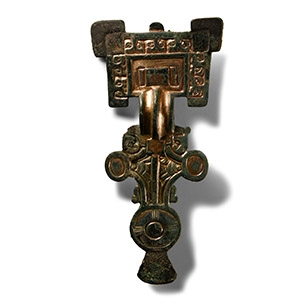
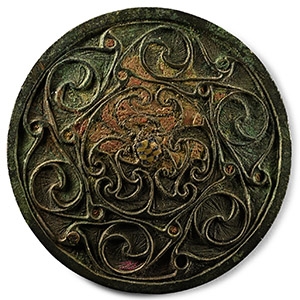

.jpg)
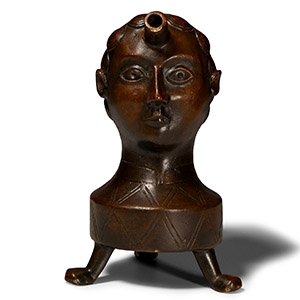
.jpg)

.jpg)
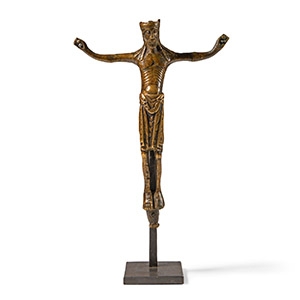
.jpg)
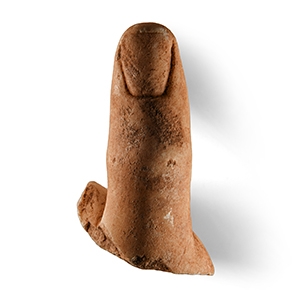
.jpg)
.jpg)
.jpg)
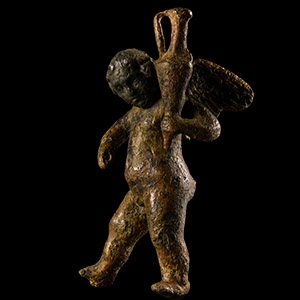
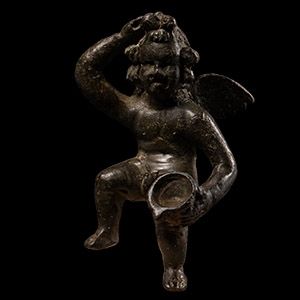
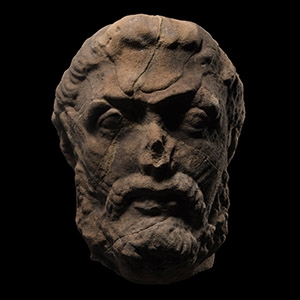
.jpg)
